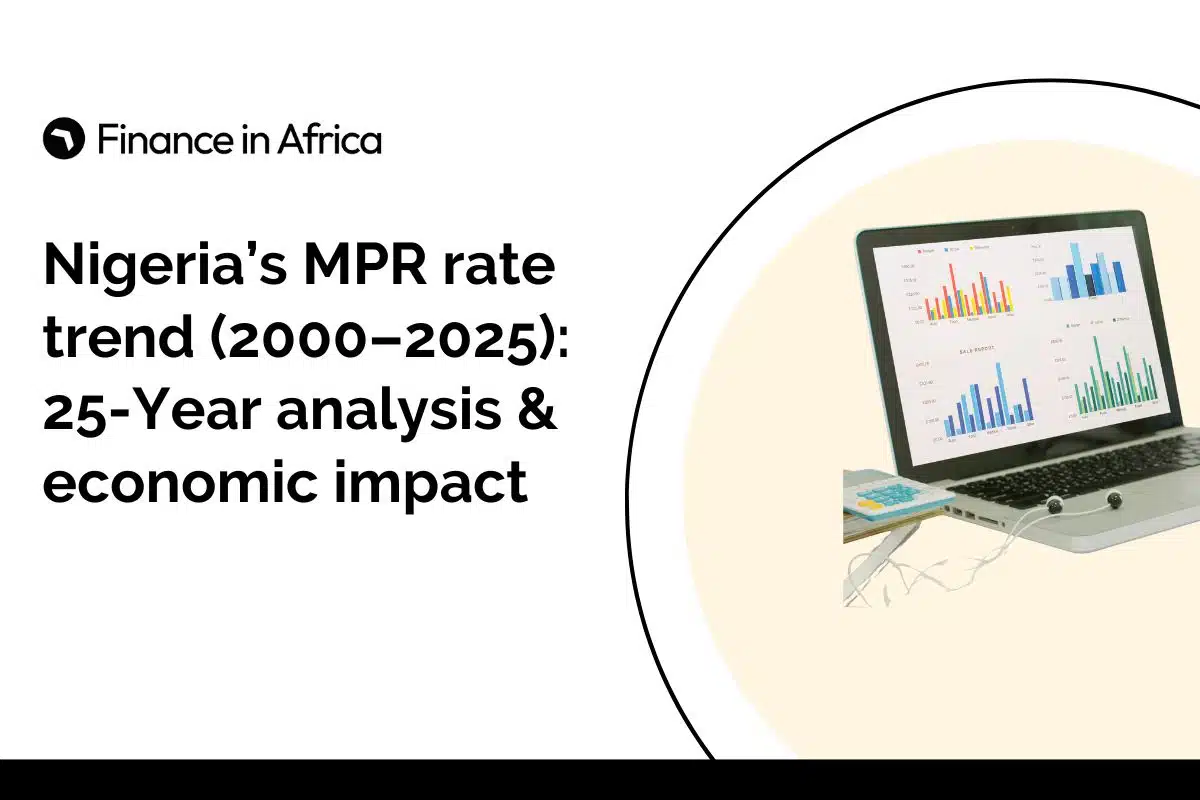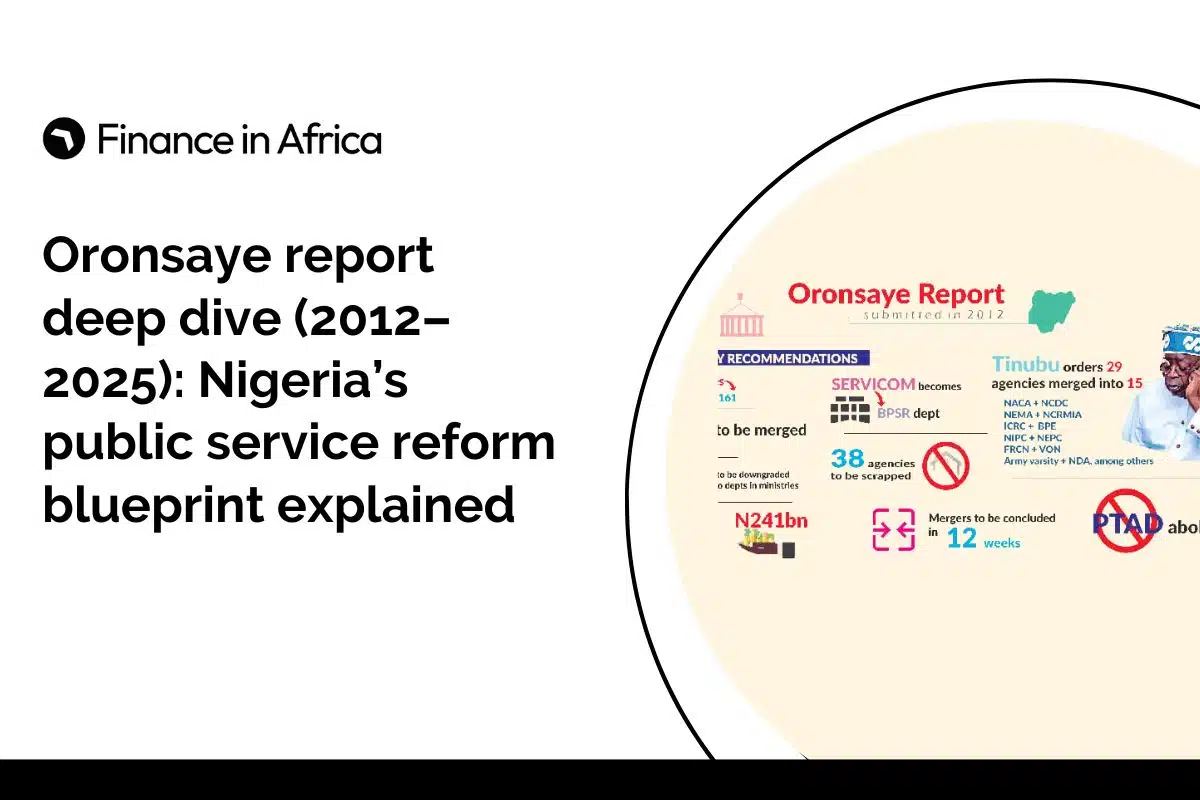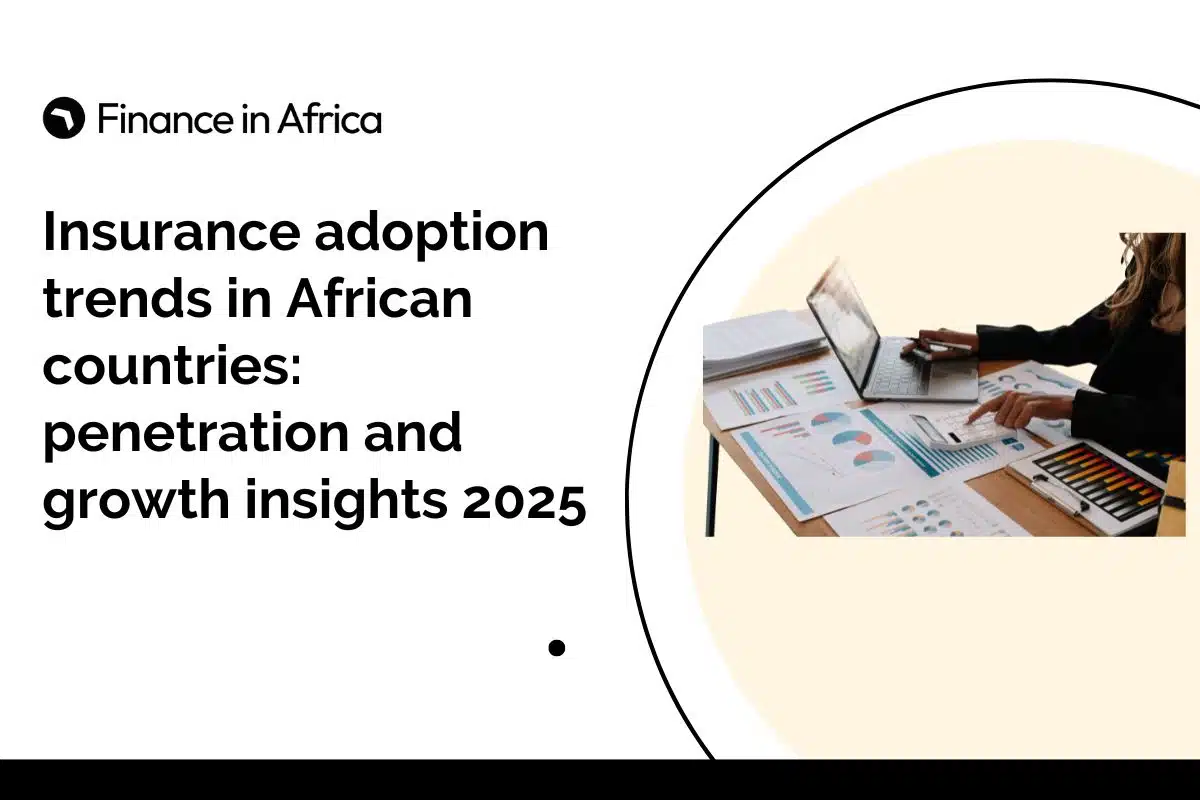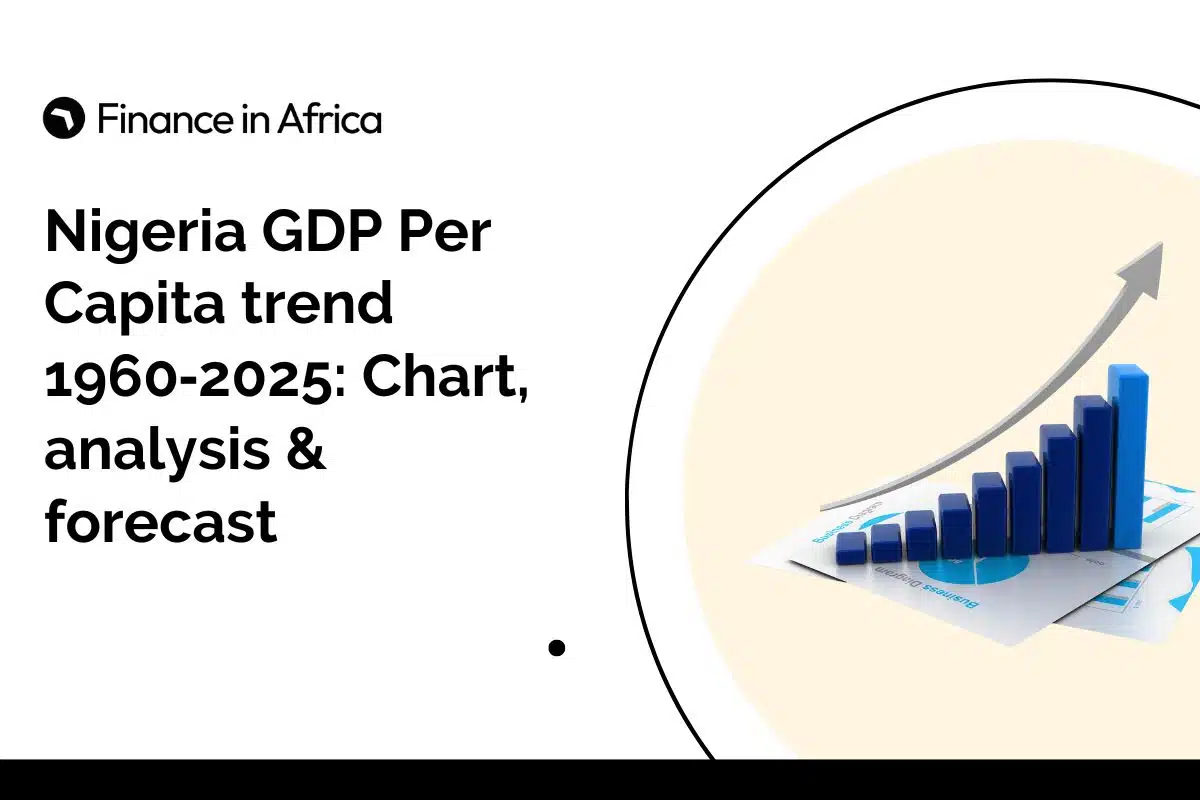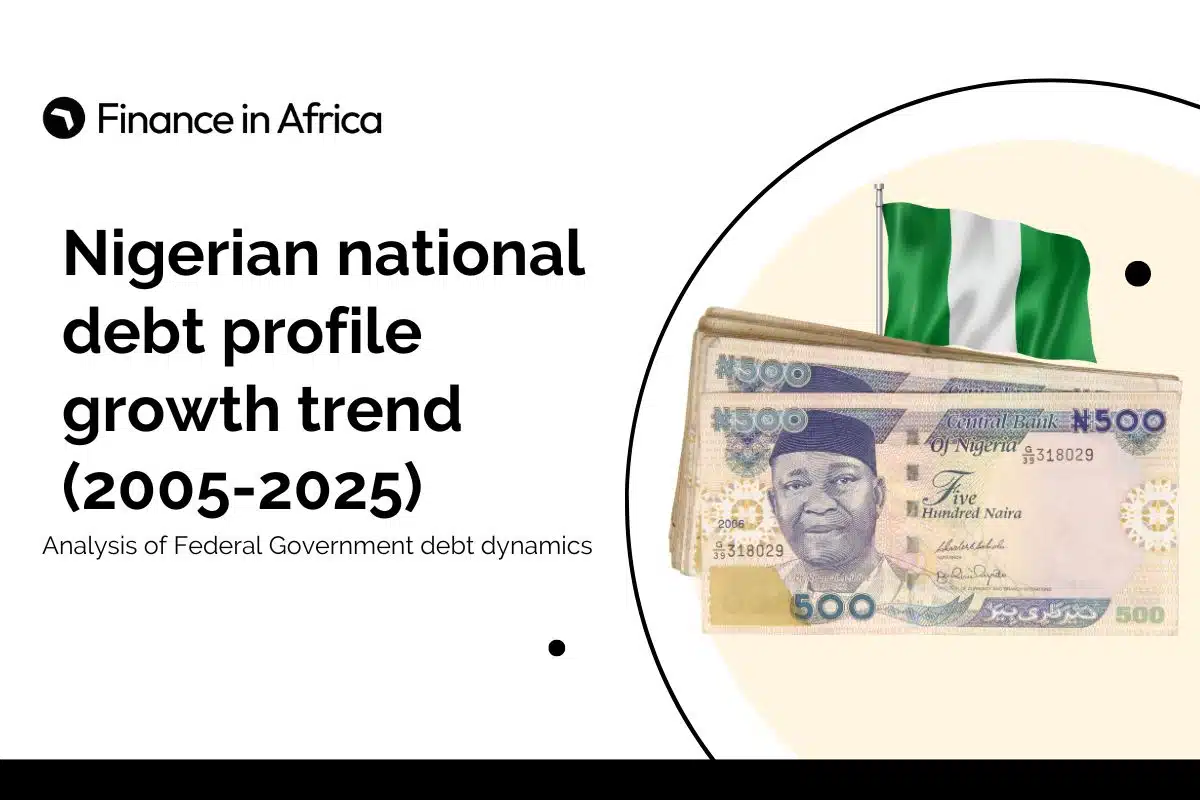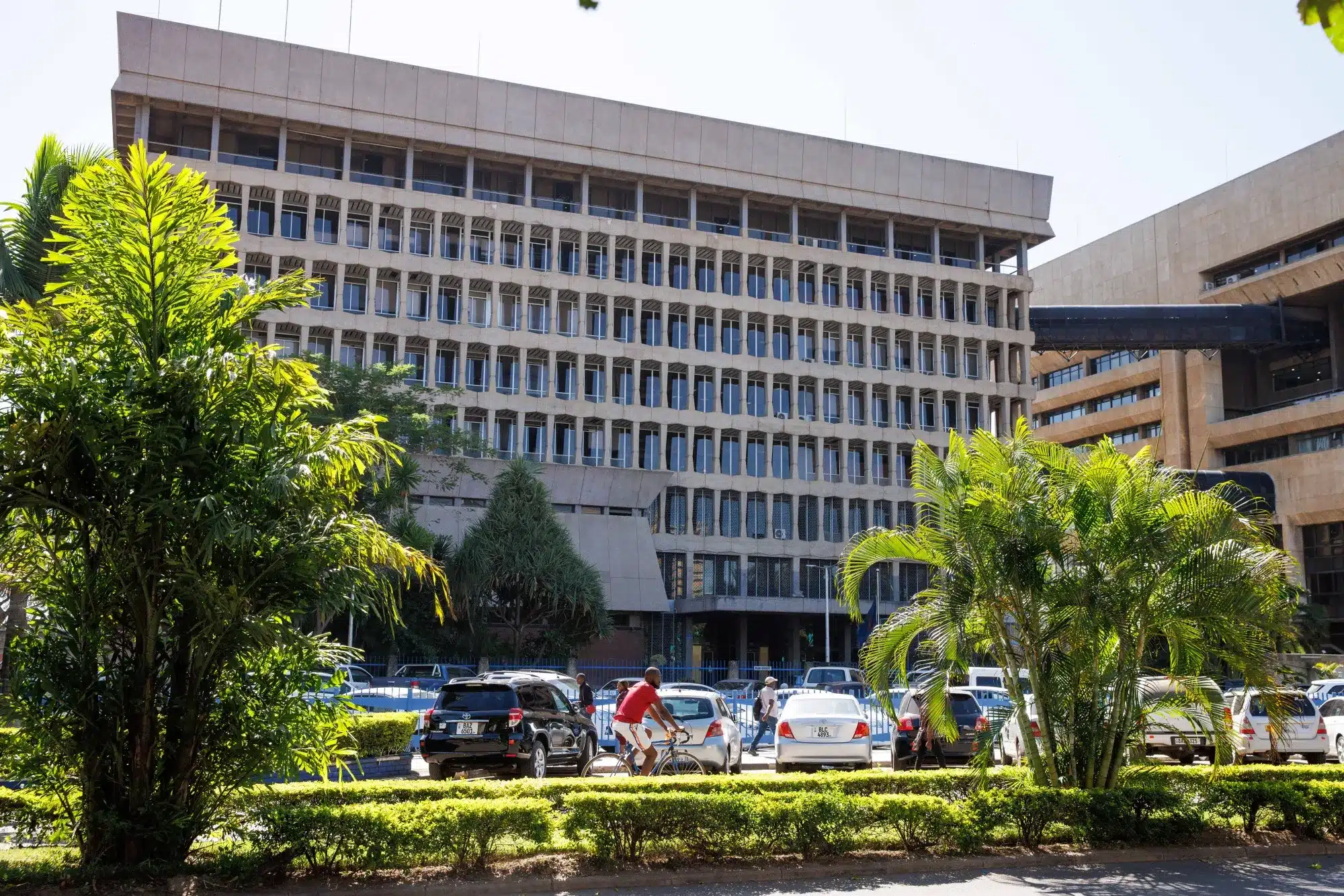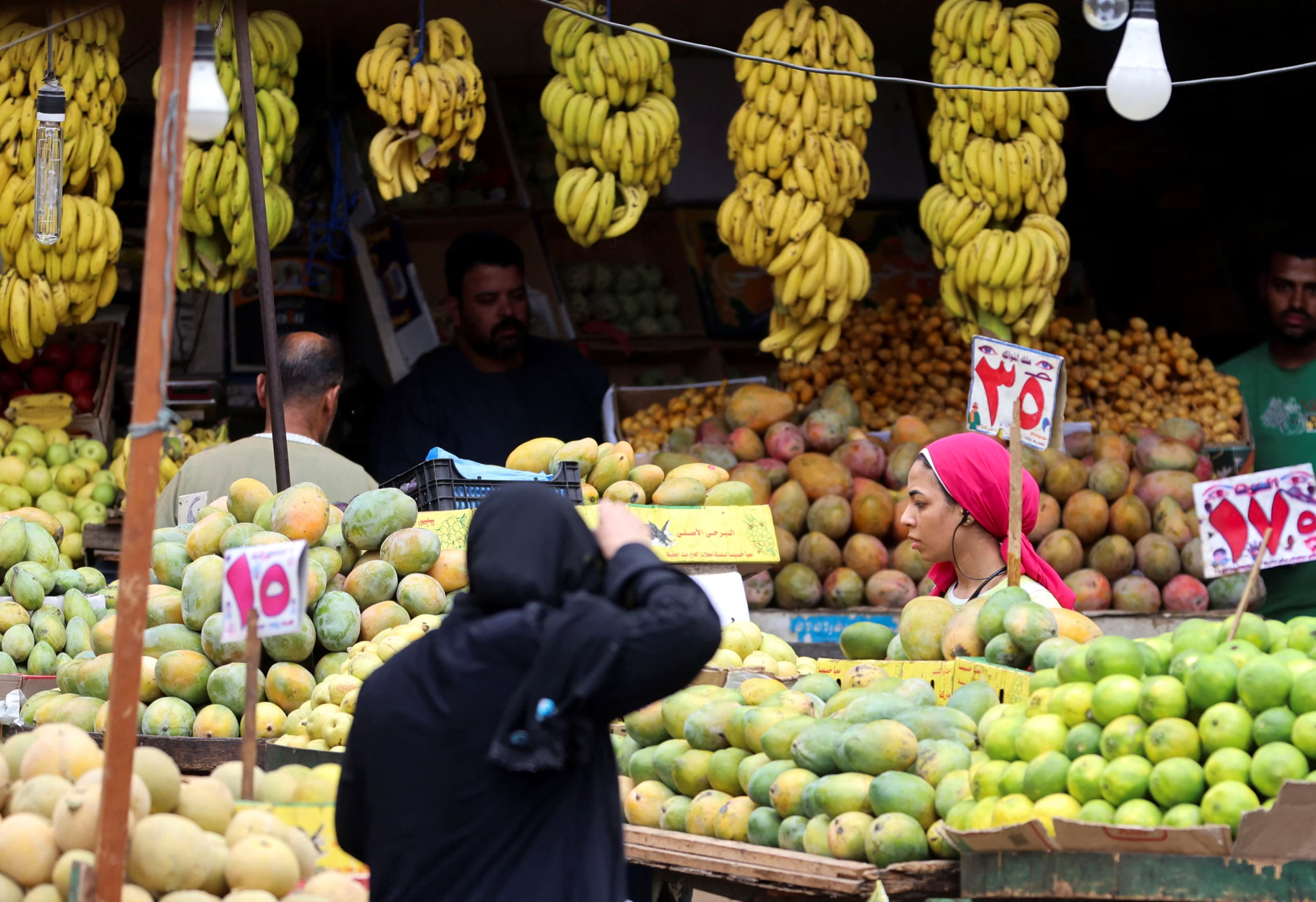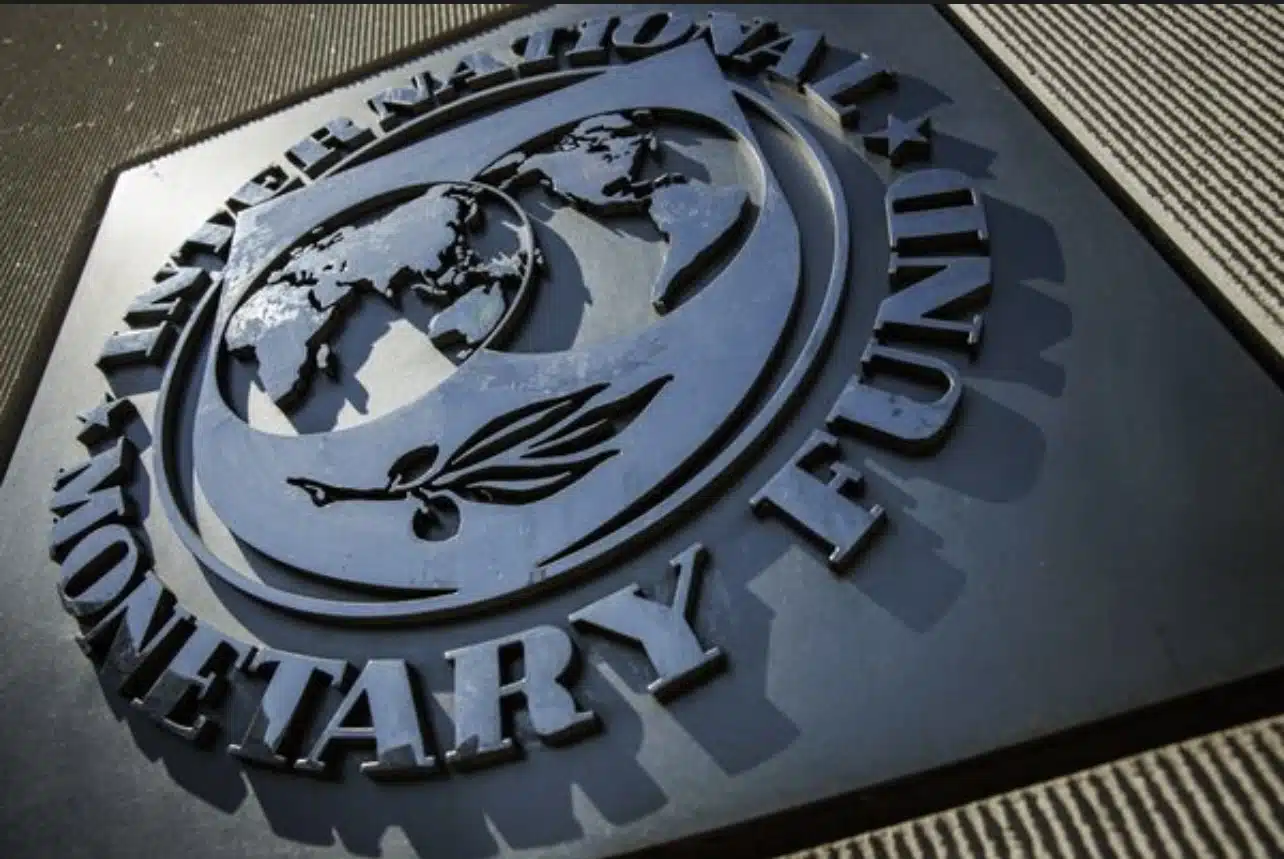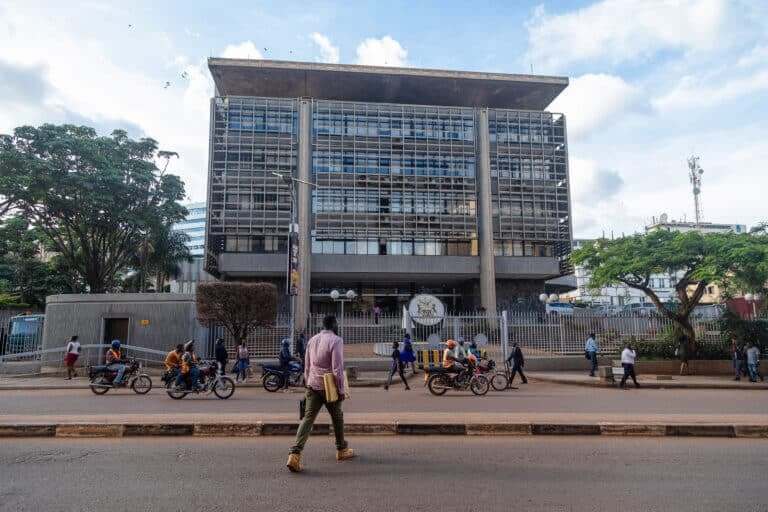Central banks use monetary policy to manage economic fluctuations and ensure price stability, with the monetary policy rate (MPR) at its core. In Nigeria, from the return to democracy in the early 2000s to the inflation-fighting era of 2022–2025, the MPR has passed through significant shifts. These changes have significantly influenced the country’s economic structure over the past two decades. Since MPR directly shapes borrowing costs and investor confidence, it also affects equity markets making timing crucial for anyone looking at the best time to buy shares in Nigeria.
With the MPR being a dynamic tool used by the Central Bank of Nigeria to navigate various economic challenges, understanding Nigeria’s MPR rate trend becomes relevant. This article will provide a comprehensive 25-year analysis of Nigeria’s monetary policy rate (MPR) evolution from 2000 to 2025, examining rate cycles, policy drivers, economic context, and the CBN’s monetary policy rate history, as well as the effectiveness of the bank’s monetary policy transmission mechanism.
Whether you’re a monetary policy analyst, central banking researcher, commercial bank treasury or asset-liability management professional, fixed income trader, bond market participant, economic forecaster, financial strategist, or a student exploring emerging market monetary policy, this article will satisfy your curiosity.
Enjoy the read!
Key takeaways
- The highest MPR ever recorded in Nigeria is 27.50%, set in May 2025.
- The MPR is instrumental for the CBN to manage economic conditions, including controlling inflation, supporting the Naira, and promoting economic growth.
- MPR acts as a benchmark for other interest rates in the economy, influencing borrowing and lending costs.
- Nigeria’s monetary policy faces several challenges, including a limited financial system, fiscal dominance, exchange rate instability, and weak policy coordination.
- The Monetary Policy Committee (MPC) of the CBN sets the MPR during its scheduled meetings, based on assessments of inflation, exchange rates, and economic growth.
What is the monetary policy rate, and why is it important?
The Monetary Policy Rate (MPR) is the interest rate at which the Central Bank of Nigeria (CBN) lends money to commercial banks. It acts as a benchmark for other interest rates in the economy, influencing borrowing and lending costs. The MPR is instrumental for the CBN to manage economic conditions, including controlling inflation, supporting the Naira, and promoting economic growth.
To understand how it works, imagine the Central Bank of Nigeria (CBN) sets the MPR at 24.75%; a commercial bank may add 5% and charge you 29.75% interest on a loan. So, if you borrow $653.59 (₦1 million) to grow your business, you’ll pay about $194.44 (₦297,500) extra in interest after one year. But if the MPR drops to 13%, that loan would be cheaper, and you’d pay less interest.
Simply put, the CBN increases the MPR to control inflation, especially when prices of food, transport, and fuel are rising. Meanwhile, it lowers the rate to encourage borrowing, boost spending, and stimulate the economy. For everyday Nigerians, the MPR affects whether loans from banks or microfinance institutions are affordable or out of reach.
According to the International Monetary Fund, central banks conduct monetary policy by adjusting the money supply, typically through the purchase or sale of securities in the open market. Open market operations affect short-term interest rates, which influence longer-term rates and economic activity. When central banks lower interest rates, monetary policy becomes more accommodative. When they raise interest rates, monetary policy is tightening.
A country’s monetary policy is connected to its exchange rate system. Interest rates influence currency value, so countries with fixed exchange rates have less room for independent monetary policy than those with flexible rates. A fully flexible exchange rate allows for more effective inflation targeting.
Why is the monetary policy rate important?
Before exploring Nigeria’s MPR rate trend and the CBN’s monetary policy rate history, let’s examine why the monetary policy rate is essential.
- Control inflation: When inflation is high, the CBN may increase the MPR to make borrowing more expensive, thereby reducing spending and cooling prices. Also, when inflation is low and the economy needs stimulus, the MPR can be reduced to encourage borrowing and investment. So the monetary policy adjustment is one of the ways to manage inflation.
- Financial stability and economic growth: The MPR helps the CBN maintain stability in the financial system by guiding interest rates and managing liquidity. Lowering the MPR can make borrowing cheaper, encouraging businesses and individuals to invest and spend, potentially boosting economic growth.
- Stabilizes the Naira: The MPR can also influence the exchange rate of the naira by affecting the attractiveness of investing in Nigerian assets. A higher MPR offers better returns on naira-denominated investments, attracting foreign capital and increasing demand for the naira, which helps stabilize its value.
- The MPR is the primary tool used by the CBN to signal the direction of its monetary policy, whether it is tightening (raising rates) or loosening (lowering rates).
Who controls Nigeria’s monetary policy rate?
The Central Bank of Nigeria (CBN) controls Nigeria’s Monetary Policy Rate (MPR) through its Monetary Policy Committee (MPC). The MPC meets regularly to review economic conditions and decide whether to raise, lower, or maintain the MPR to manage inflation, stabilize the naira, and support economic growth.
At its 300th meeting held on May 19th and 20th, 2025, the Monetary Policy Committee (MPC) of the CBN retained the monetary policy rate at 27.50%. The Committee also maintained the asymmetric corridor around the MPR at +500 and -100 basis points. It retains the cash reserve ratio (CRR) for deposit money banks at 50.00% and for merchant banks at 16.00%, while the liquidity ratio remains 30.00%.
Historical overview of Nigeria’s monetary policy rate trend
Nigeria’s monetary policy rate (MPR) has been significant in shaping the country’s economy since its formal adoption in 2006. The benchmark interest rate set by the Central Bank of Nigeria (CBN) guides lending rates, helps control inflation, supports the naira, and influences overall economic growth.
Over the years, Nigeria’s monetary policy rate has experienced significant fluctuations, particularly in 2024 and 2025, amid the CBN’s efforts to combat inflation and exchange rate instability. In 2024, the central bank aggressively tightened monetary policy, raising the MPR to curb rising inflation and stabilize the Naira.
These shifts reflect broader trends in Nigerian central bank policy rates, which are often adjusted to respond to macroeconomic pressures. As of the last meeting of the MPC held on 19th and 20th May 2025, the MPR remained at 27.50%.
Historically, the CBN introduced the Monetary Policy Rate (MPR) as a key policy instrument in 2006, replacing the Minimum Rediscount Rate (MRR). The CBN gradually replaced the MRR to align with international best practices and gain more flexibility in shaping monetary policy. Prior to this period, the central bank used direct controls to manage the money supply and interest rates. This era saw various attempts to control inflation and manage the exchange rate, often through setting limits on credit and interest rates.
Major changes and cycles in Nigeria’s MPR trend
Nigeria’s Monetary Policy Rate (MPR) has fluctuated over time in response to both local challenges and global events. Below is a breakdown of the major changes and turning points in the MPR trend since 2000:
- Early democracy period (2000-2006)
In Nigeria’s early democracy period (2000-2006), the primary monetary policy tool was the minimum rediscount rate (MRR), which served as the anchor for short-term interest rates. However, its ineffectiveness led to the introduction of the Monetary Policy Rate (MPR) in late 2006.
Since then, the MPC has begun meeting every other month to review economic developments and make necessary adjustments to the MPR. These changes in the MPR were intended to influence other money market rates, including the interbank rate, and ultimately impact credit growth and price levels.
As Nigeria’s democratic governance solidified and the banking sector underwent consolidation in 2005-2006, the Central Bank of Nigeria (CBN) initiated a gradual normalization of interest rates. This period, marked by significant banking reforms, including the recapitalization of banks, laid the foundation for the modern Monetary Policy Rate (MPR) framework, which the CBN officially adopted in 2006.
- Pre-crisis easing (2007-2008)
In early 2007, the Central Bank adopted an approach to meet reserve money targets under the Policy Support Instrument (PSI). Reserve money rose from $549.02 million (₦841.25 billion) in March to $589.02 million (₦902.40 billion) in May, with $27.71 million (₦42.40 billion) in excess liquidity. By the end of June, it dropped to $560.26 million (₦858.20 billion), meeting the $562.09 million (₦860 billion) target through intensive mop-up operations using money market and forex tools.
To ease monetary conditions, the MPC cut the MPR from 10% to 8%, introduced tenured repo at MPR, and narrowed the interest rate corridor to ±250 basis points, setting the deposit and lending facilities at 6.5% and 10.5%, respectively. These facilities were to be used only as a last resort, with penalties for frequent access. The MPC also approved more primary market issuances to absorb $65.36 million (₦100 billion), including interbank placements in liquidity ratio computation, and continued Open Market Operations (OMO) for liquidity control.
Subsequently, in the 200th MPC meeting held in December 2007, the committee decided to raise the MPR by 50 basis points (i.e., from 9.0% to 9.5%) to signal a tightening of policy stance. The committee also issued new primary instruments to mop up a significant portion of the anticipated excess liquidity in the system.
Later in September 2008, amidst the global financial crisis, the CBN implemented measures to stimulate lending by reducing the Monetary Policy Rate (MPR) from 10.25% to 9.75%. It also lowered the Cash Reserve Requirement (CRR) and liquidity ratio to further encourage banks to lend money. This action was taken to counteract the drying up of domestic liquidity and the broader economic downturn caused by the global crisis.
These rate fluctuations, combined with CRR and liquidity adjustments, reveal how Nigeria’s financial system was sensitive to global shocks.
- Post-crisis stabilization (2009-2014)
Following the global financial crisis of 2008–2009, the Central Bank of Nigeria (CBN) adopted an approach to monetary policy aimed at restoring macroeconomic stability and confidence in the financial system. The monetary policy rate (MPR), which had been reduced to 8% as part of emergency easing, was gradually raised in the years that followed, reaching 12% in 2011 and maintaining between 12% and 13% through much of the period until 2014. This reflected a shift from crisis response to gradual normalization amid inflation pressures
Within this period, the CBN used the MPR as a tool for inflation control and also to guide broader macroeconomic policy. By the end of 2014, the CBN had successfully transitioned from the post-crisis easing phase to a more stable and policy-consistent environment. Both global and domestic factors influenced this transition, including the impact of declining oil prices and the end of the US Federal Reserve’s quantitative easing program. The CBN prioritized price stability and focused on taming inflation, raising the Monetary Policy Rate (MPR) and Cash Reserve Requirement (CRR) accordingly.
- Oil shock response (2015-2019)
The 2014-2015 oil price crash impacted Nigeria’s economy, leading to a recession in 2016 and pushing inflation to 18.7% by early 2017. In response, the Central Bank of Nigeria (CBN) raised the monetary policy rate (MPR) to 14% in July 2016, where it remained through 2019 to defend the naira and control inflation.
While the tightening helped to reduce inflation to 11.4% by 2019, economic growth remained weak, averaging about 2%. While structural challenges like FX restrictions and poor fiscal coordination limited the impact of the policy, the CBN combined its tightening stance with targeted interventions, such as the Anchor Borrowers’ Programme and other development finance tools, to support growth.
In 2019, the Central Bank’s monetary policy was designed to stimulate growth while maintaining inflation within a tolerable threshold. The Monetary Policy Committee (MPC) adjusted the monetary policy rate (MPR) downwards by 50 basis points to 13.5% in March 2019. This was to signal a pro-growth stance by way of encouraging the flow of credit to the productive sectors of the economy. The MPR was retained at 13.5%, along with an asymmetric corridor of +200 and -500 basis points around the MPR for the remainder of the year.
- COVID-19 policy response (2020-2021)
In early 2020, COVID-19 caused a global economic crisis that also affected Nigeria. The country’s economy entered a recession amid an oil price downturn and lockdowns, which disrupted business activity. In response to the outbreak, the Monetary Policy Committee announced several policy measures, which include granting an extension of the loan moratorium on principal repayments, interest rate reduction on all intervention loan facilities from 9% to 5%, establishment of a $32.68 million (₦50 billion) targeted credit facility to households and Micro, Small, and Medium Enterprises (MSMEs), and regulatory forbearance to banks and credit support to the healthcare industry, among others.
Subsequently, in September 2020, the CBN reduced the monetary policy rate (MPR) from 12.5% to 11.5% to support the recovery and growth. Reductions in the Cash Reserve Ratio (CRR) and liquidity ratio complemented this move. The MPC adjusted the asymmetric corridor from +200/-500 to +100/-700 basis points around the MPR, retained the CRR at 27.5%, and retained the liquidity ratio at 30%.
Alongside the Federal government, the CBN also worked to coordinate fiscal and monetary stimulus efforts, such as the Economic Sustainability Plan (ESP), which aimed to inject over ₦2.3 trillion into the economy.
The Economic Sustainability Plan (ESP) was a key component of the stimulus strategy, designed to mitigate the economic impact of the COVID-19 pandemic and aimed to stimulate the economy, create jobs, invest in infrastructure, and enhance self-sufficiency in critical sectors.
- Inflation-fighting era (2022-2025)
The period from 2022 to 2025 is tagged “inflation-fighting era” because of the rise in inflation following the COVID-19 pandemic and the subsequent efforts by central banks to curb it. Amid this era, the CBN began a sustained cycle of aggressive rate hikes, raising the MPR from 11.5% to 13% in May 2022, then to 15.5% in September 2022, 16.5% in November 2022, and 17.5% in January 2023.
Following mid-2023, the Central Bank of Nigeria (CBN) continued its monetary policy tightening because of sustained inflation, increasing the monetary policy rate (MPR) in stages: 18.75% in July 2023, 22.75% in February 2024, 24.75% in March 2024, 26.75% in July 2024, and 27.25% in September 2024, this series of increases aimed to curb inflationary pressures within the Nigerian economy.
Fast forward to April 2025, inflation slightly eased to 23.71%, down from 24.23% in March. Amid this, the monetary policy rate (MPR) in Nigeria is currently 27.5% with a year-on-year inflation rate of 22.97%, as of May 2025.
The CBN is fighting inflation through monetary policy adjustments, particularly by raising the Monetary Policy Rate (MPR) and conducting Open Market Operations (OMO) to mop up excess liquidity in the financial system. The CBN also aims to transition into an inflation-targeting framework and is implementing strategies to restore purchasing power and ease economic hardship.
Historical MPR timeline (2000–2025)
| Year | MPR (%) | Annual Change (bps) | Key Policy Rationale | Inflation Rate (%) | GDP Growth (%) | Major Economic Event |
| 2000 | 21.0 | – | High inflation control | 6.9 | 5.4 | Return to democracy |
| 2001 | 20.5 | -50 | Moderate easing | 18.9 | 8.2 | Banking sector reforms |
| 2007 | 10.0 | -250 | Aggressive easing | 5.4 | 7.0 | Pre-global crisis |
| 2008 | 10.25 | +25 | Crisis response | 11.6 | 6.3 | Global financial crisis |
| 2015 | 13.0 | +200 | Oil shock response | 9.0 | 2.7 | Oil price collapse |
| 2020 | 11.5 | -150 | COVID-19 easing | 13.2 | -1.8 | Pandemic response |
| 2022 | 15.5 | +400 | Inflation fighting | 18.8 | 3.3 | Post-pandemic tightening |
| 2025 | Anchoring inflation expectations, supporting the Naira. | 22.97 | 3.2 | Policy normalization |
Monetary policy transmission mechanism in Nigeria
The monetary policy transmission mechanism in Nigeria, which involves changes to the monetary policy rate, is the process by which the CBN uses policy tools to influence the economy, to control inflation, and to stabilize the exchange rate. This mechanism operates through various channels, including interest rates, exchange rates, and asset price channels.
- Interest rate channel
The CBN uses the Monetary Policy Rate (MPR) as a benchmark for commercial banks, influencing their lending and deposit rates. Changes in the MPR are intended to affect borrowing costs, investment decisions, and ultimately, aggregate demand and inflation.
In Nigeria’s interest rate trend between 2022 and 2025, commercial banks raised lending rates in response to the CBN’s MPR hikes from 11.5% in early 2022 to 27.5% by May 2025. This led to higher borrowing costs for businesses and consumers, slowing credit growth, especially in sectors dependent on loans, such as manufacturing and agriculture.
- Exchange rate channel
The CBN manages the exchange rate through various interventions, aiming to stabilize the value of the Naira against other currencies. Fluctuations in the exchange rate can impact import and export prices, affecting inflation and the competitiveness of domestic industries.
Best put, the MPR has an impact on Nigeria’s exchange rate dynamics, particularly through its influence on capital flows and investor sentiment. A higher MPR raises returns on government bonds and money markets, making them more attractive to foreign investors.
For instance, in 2023-2025, successive increases to the Monetary Policy Rate (MPR) in Nigeria helped to stabilize the naira temporarily by attracting foreign exchange (FX) inflows. This occurred despite volatility in both the official and parallel (black) foreign exchange markets.
- Asset price channel
In Nigeria, the asset price channel plays a significant role in the monetary policy transmission mechanism. It is how changes in monetary policy influence asset prices, which affect economic activity like investment and consumption. The asset price channel operates by impacting the value of assets, such as equities and real estate, ultimately affecting wealth and investment decisions.
Higher policy rates also affect the Nigerian stock market. As interest rates rise, the cost of borrowing for listed companies increases, reducing their profit margins and valuation outlooks. This often leads to a decline in equity prices, particularly in sectors like banking, manufacturing, and real estate. For instance, the CBN’s monetary policy review (June 2021) indicates that the equity market capitalization in Nigeria decreased from $13.76 billion (₦21.06 trillion) in December 2020 to $12.92 billion (₦19.76 trillion) by mid-2021, corresponding to a period of monetary policy tightening.
With the Nigerian financial system still in development, the MPR may not always yield the desired results, even as the CBN uses it to guide interest rates and control inflation, since many businesses continue to struggle to access loans.
While these are the mechanisms of the monetary policy transmission, a less developed financial system, a lack of proper policy coordination, and external shocks, such as changes in global commodity prices or capital flows, can hinder the effectiveness of monetary policy in Nigeria.
Global influences and regional comparisons of Nigeria’s monetary policy
While we analyze Nigeria’s MPR rate trend, let’s also consider global factors and regional monetary policies. Beyond other reasons, global and regional economic factors also influence Nigeria’s monetary policy, which is challenging its ability to achieve domestic stability and sustainable growth.
The Central Bank of Nigeria (CBN) navigates these influences by adjusting monetary policy instruments like the Monetary Policy Rate (MPR), Cash Reserve Ratio (CRR), and Open Market Operations (OMO) to manage inflation, exchange rates, and economic growth.
Global influences
Again, Nigeria’s monetary policy does not operate in isolation; it is susceptible to global economic shocks and trends, particularly the US Federal Reserve interest rate decisions, which heavily influence global rates.
For instance, the Federal Reserve’s 2022-2023 interest rate hike raised concerns about spillover effects on smaller, emerging markets and developing economies, such as Nigeria.
This is largely because higher US interest rates make dollar-denominated assets more attractive to investors seeking higher returns, leading to capital flight from countries with lower interest rates.
This situation tends to put pressure on the naira, increases imported inflation, and often forces the CBN to hike its Monetary Policy Rate (MPR). Below is a further breakdown:
- International commodity prices
Nigeria’s reliance on oil exports makes it vulnerable to fluctuations in global oil prices, impacting government revenue and the balance of payments.
- Global inflation
Rising global inflation, as seen during the Russia-Ukraine war, can be transmitted to Nigeria through imported goods and services, requiring the CBN to tighten monetary policy to curb domestic price increases.
- Global interest rates
Changes in interest rates by major central banks like the US Federal Reserve can influence capital flows into and out of Nigeria, affecting exchange rates and potentially destabilizing the domestic financial system.
- Global supply chains
Disruptions to global supply chains, such as those experienced during the COVID-19 pandemic, can lead to higher import costs and inflationary pressures in Nigeria.
Regional comparison
The monetary policy rates (MPR) in Ghana, Kenya, and South Africa indicate economic conditions and policy responses. For instance, as of May 2025, Nigeria’s MPR was 27.5%, and Ghana’s MPR was 28.0%, while Kenya’s was 9.75%, and South Africa’s was 7.25%.
| Country | Policy Rate (2025) | Key Drivers |
| Nigeria | 27.50% | Inflation, naira depreciation, and FX scarcity |
| Ghana | 28.0% | Inflation, Cedi instability |
| Kenya | 9.75% | Food inflation, currency defense |
| South Africa | 7.25% | Weak economic growth, global trade concerns |
The above shows the diverse economic landscapes and policy approaches across these three Sub-Saharan African nations. While South Africa faces a challenging economic situation characterized by weak growth and concerns about global trade, Ghana has witnessed an easing in inflation driven by a sharp decline in food prices, with food inflation dropping to 16.3% from 22.8% in May. The Bank of Ghana held its benchmark interest rate at 28% in May, citing progress in inflation control while remaining cautious about inflationary risks.
In June 2025, Kenya’s overall inflation rate stood at 3.8%. This was the same rate as it was in May, well within the Central Bank of Kenya’s target range of 2.5% to 7.5%
Structural challenges & policy constraints for monetary policy in Nigeria
Monetary policy in Nigeria faces significant structural and policy constraints that hinder its effectiveness in achieving macroeconomic stability. These challenges include structural issues like infrastructural deficiencies, insecurity, and human capital limitations, alongside policy-related issues such as fiscal dominance, liquidity overhang, and a lack of coordination between monetary and fiscal policies.
- Limited financial system: With the level of development of the financial system in Nigeria still low, limited financial inclusion and weak interbank market activity make it difficult for changes in MPR to translate into borrowing and lending conditions across the broader economy. The absence of a strong and fair credit infrastructure continues to choke opportunities for individuals and businesses.
- Weak policy coordination: Lack of alignment between monetary, fiscal, and structural policies leads to mixed signals. For instance, expansionary fiscal spending during periods of tight monetary policy reduces the overall policy impact and investor confidence.
- Exchange rate Instability: Persistent volatility in the foreign exchange market as a result of oil dependency, low reserves, and multiple exchange rate regimes limits the CBN’s control over inflation through interest rates. Investors often respond more to FX risks than to MPR signals.
- Fiscal dominance: The Central Bank of Nigeria (CBN) faces challenges in implementing monetary policy due to the dominance of fiscal policy, where government spending and revenue collection decisions can undermine the CBN’s efforts to control inflation and manage the money supply.
When government spending is excessive, particularly if financed through borrowing from the CBN, it can inject more money into the economy, potentially leading to increased demand and higher prices.
- Political Interference: Central bank independence is important for effective monetary policy, but in Nigeria, there can be instances of political interference that compromise the CBN’s autonomy.
- External vulnerabilities: Global commodity price shocks, rising U.S. interest rates, and capital flight episodes regularly disrupt Nigeria’s domestic monetary policy objectives.
- Human capital deficiencies: A shortage of skilled labor and a skills gap in the workforce limit productivity growth and innovation, hindering the effectiveness of monetary policy aimed at stimulating the economy.
However, addressing Nigeria’s monetary policy challenges requires a dynamic approach. These include diversifying the economy from oil, improving infrastructure, enhancing human capital, promoting financial inclusion, and strengthening coordination between monetary and fiscal authorities. It is also important to keep the Central Bank’s independence to ensure a credible and consistent monetary policy.
Conclusion
Amidst challenges, Nigeria’s monetary policy rate has undergone significant shifts from the return to democracy in the early 2000s to the inflation-fighting era of 2022–2025, with these changes having a substantial impact on the country’s economic structure.
While MPR adjustments have influenced interest rates, capital flows, and inflation expectations, the overall transmission remains constrained by the limited financial system, fiscal dominance, exchange rate instability, and weak policy coordination. Some solutions that have been identified include diversifying the economy beyond oil, enhancing human capital, promoting financial inclusion, and strengthening coordination between monetary and fiscal authorities.
In reviewing the CBN monetary policy rate history, Nigeria’s MPR rate trend reflects the country’s struggle to balance inflation control, currency stability, and economic growth, indicating the need for deeper reforms beyond rate adjustments.
In May 2025, the Central Bank of Nigeria retained the monetary policy rate at 27.5% for the second consecutive time. The decision was influenced by positive trends, such as narrowing exchange rate gaps, a stronger balance of payments, lower fuel prices, and easing food inflation. However, the bank noted ongoing risks from high electricity tariffs and persistent FX demand, prompting it to maintain other key parameters, like the cash reserve and liquidity ratios.
Note: Exchange rate used in this article is ₦1,530/$1 on July 24, 2025
FAQs
Why does the CBN raise the MPR?
The CBN raises the MPR to control inflation, reduce money supply, discourage excessive borrowing, and support currency stability, particularly during periods of economic downturn or naira depreciation.
When was Nigeria’s MPR at its highest?
The highest MPR ever recorded in Nigeria is 27.50%, set in May 2025.
How does the MPR affect ordinary Nigerians?
When the MPR rises, banks raise their loan and interest rates, making borrowing more expensive. This can lead to reduced consumer spending and business investment. However, it helps to curb inflation by reducing overall demand in the economy.
Has Nigeria’s MPR ever dropped significantly?
Yes. In September 2020, the Central Bank of Nigeria (CBN) reduced the MPR to 11.5% to stimulate the economy during the COVID-19 pandemic. This represented one of the lowest MPR levels seen in recent years.
Who sets the MPR in Nigeria?
The Monetary Policy Committee (MPC) of the CBN sets the MPR during its scheduled meetings, based on assessments of inflation, exchange rates, and economic growth.
Disclaimer
This publication, review, or article (“Content”) is based on our independent evaluation and is subjective, reflecting our opinions, which may differ from others’ perspectives or experiences. We do not guarantee the accuracy or completeness of the Content and disclaim responsibility for any errors or omissions it may contain.
The information provided is not investment advice and should not be treated as such, as products or services may change after publication. By engaging with our content, you acknowledge its subjective nature and agree not to hold us liable for any losses or damages arising from your reliance on the information provided. Always conduct your research and consult professionals where necessary.

